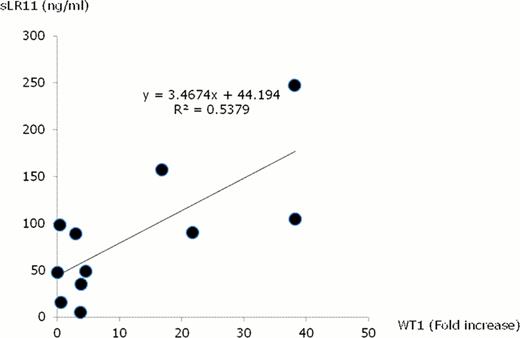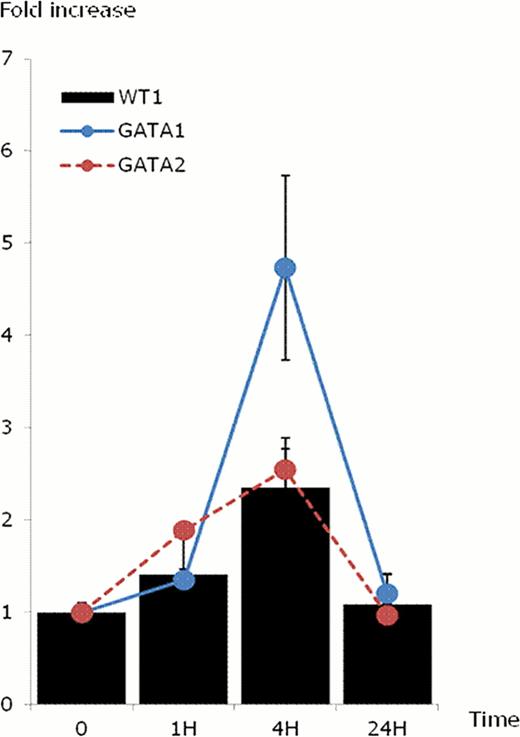Abstract
Abstract 4795
We have recently reported that LR11 (also called SorLA or SORL1) is specifically expressed on the surface of acute leukemia cells, and the circulating levels of soluble form (sLR11) are highly associated with peripheral blast numbers in acute leukemia patients at diagnosis and decreased in remission (2012, Sakai et al). Although the functional role of sLR11 in the migration of undifferentiated vascular cells has been studied, the pathological significance of sLR11 has not been elucidated for the development of leukemia blast properties. The expressions of WT1, an oncogene for the various malignant tumors, are associated with poor prognosis of patients with acute leukemias, and the WT1 levels have been thought to indicate the blast properties. In this study, in order to know the significance of sLR11 for the oncogenic properties of leukemia cells, we first examined the correlations of circulating sLR11 levels with WT1 mRNA levels in the bone marrow of acute leukemia patients. Next, we analyzed the effects of sLR11 on WT1 mRNA expressions, particularly in association with GATAs, factors for the WT1 gene transcription, in leukemia cell lines.
Levels of serum sLR11 and bone marrow cell WT1 mRNA were measured by ELISA and real-time PCR, respectively, using samples of acute leukemia patients (AML n=6, ALL n=5). Statistical analyses were performed by Spearman rank correlation system. mRNA levels of GATA1, GATA2 and WT1 were analyzed using K562 cells with or without recombinant sLR11 and LR11-overexpressing K562 cells.
Figure 1 shows the relationship between sLR11 in serum and WT1 mRNA in bone marrow mononuclear cells in acute leukemia patients at diagnosis. The sLR11 levels were significantly positively correlated with the WT1 levels in the patients. In order to know the pathological link between sLR11 and WT1 in leukemia cells in detail, we then analyzed the effects of sLR11 on the WT1 mRNA expressions in K562 cells. WT1 mRNA levels were gradually increased after the incubation with 1 ng/ml sLR11, and the levels at 4 h were elevated to 2.5-fold of those before the incubation (Figure 2). The levels were then decreased to the levels equivalent to those before the incubation. The mRNA levels of GATA1 and GATA2 were also drastically elevated at 4 h and then sharply decreased after adding sLR11. GATA1 mRNA levels were particularly increased by 5-fold of those before the incubation. Thus, sLR11 were suggested to cause the activation of transcription factor network of GATAs, and induce the WT1 gene transcription in the cells. We finally investigated the effects of sLR11 overexpression on the elevation of WT1 mRNA in K562 cells. The LR11-overexpressing cells showed significantly increased expression levels of GATA1 and GATA2 in addition to WT1 mRNAs.
Circulating sLR11 levels were significantly correlated with the WT1 mRNA expression levels in acute leukemia. sLR11 induces the WT1 expression, possibly through the activations of GATAs in leukemia cells. These results suggest that sLR11 may be a novel marker indicating the malignant properties of leukemia cells.
Correlation between serum sLR11 and bone marrow WT1 mRNA in acute leukemia patients
Correlation between serum sLR11 and bone marrow WT1 mRNA in acute leukemia patients
No relevant conflicts of interest to declare.
Author notes
Asterisk with author names denotes non-ASH members.



